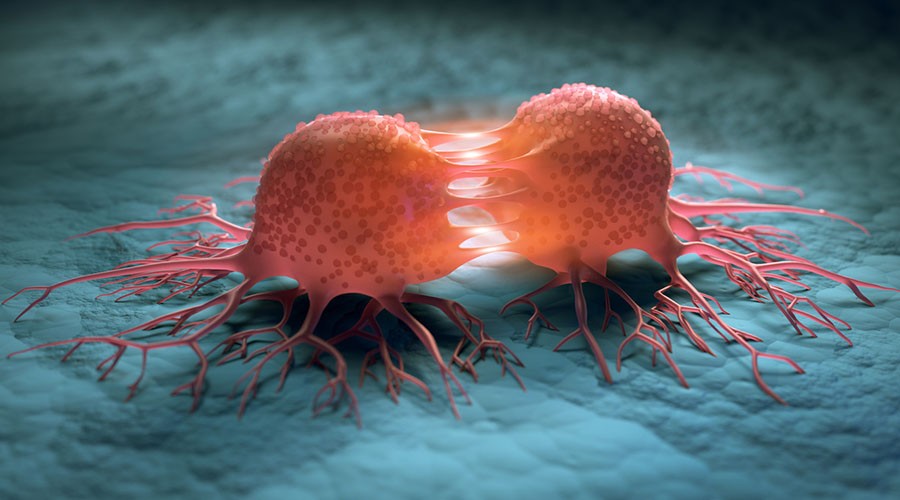Relics of ancient viruses – that have spent millions of years hiding inside human DNA – help the body fight cancer, say scientists.
The study by the Francis Crick Institute showed the dormant remnants of these old viruses are woken up when cancerous cells spiral out of control.
This unintentionally helps the immune system target and attack the tumour.
The team wants to harness the discovery to design vaccines that can boost cancer treatment, or even prevent it.
The researchers had noticed a connection between better survival from lung cancer and a part of the immune system, called B-cells, clustering around tumours.
B-cells are the part of our body that manufactures antibodies and are better known for their role in fighting off infections, such as Covid.
Precisely what they were doing in lung cancer was a mystery but a series of intricate experiments using samples from patients and animal tests showed they were still attempting to fight viruses.
“It turned out that the antibodies are recognising remnants of what’s termed endogenous retroviruses,” Prof Julian Downward, an associate research director at the Francis Crick Institute, told me.
Retroviruses have the nifty trick of slipping a copy of their genetic instructions inside our own.
- More than 8% of what we think of as “human” DNA actually has such viral origins
- Some of these retroviruses became a fixture of our genetic code tens of millions of years ago and are shared with our evolutionary relatives, the great apes
- Other retroviruses may have entered our DNA a few thousand years ago
Some of these foreign instructions have, over time, been co-opted and serve useful purposes inside our cells, but others are tightly controlled to stop them spreading.
However, chaos dominates inside a cancerous cell when it is growing uncontrollably and the once tight control of these ancient viruses is lost.
These ancient genetic instructions are no longer able to resurrect whole viruses but they can create fragments of viruses that are enough for the immune system to spot a viral threat.




